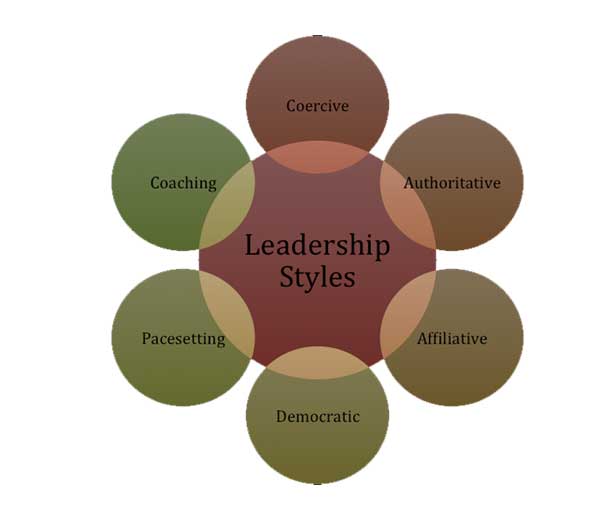
Leadership Styles in Business
What are different types of leadership styles in business? Which are the most effective leadership theories that provide best results?
By nature, every good leader aims to find this answers but the answer will never be simple! In the real business life, there are many examples that show the effectiveness depends on many factors: situations, goals and particular needs, management characteristics, decision-making process and etc.
Instead of choosing one style of leadership, truly effective leaders are able to adjust styles, selecting the one that is needed at the moment.
Different Types of Leadership Styles: Definitions and Characteristics
1. Autocratic Leadership Style
Autocratic leadership style works today in many workplace environments and situations.
Autocratic leadership (sometimes known as authoritarian leadership) means that one individual controls all the decisions and has total authority. This person accepts very little consulting from other members.
Autocratic leaders make decisions mostly based on their beliefs and ideas and rarely accept suggestions from followers or team members.
Key characteristics of autocratic leadership style:
- Only the leader have the authority and control to take all decisions.
- Autocratic leaders rarely delegate tasks to employees and subordinates.
- Leaders do not consult with followers.
- The staff doesn′t have a chance to provide their opinions and ideas.
- Workers′ motivation comes from structured rules of rewards and punishments.
- Autocratic leaders take full responsibility and full esteem for the work.
2. Participative/Democratic Leadership Style
Democratic leadership (also known as participative leadership), is a very open and collegial leadership style in which members of the group take participation in the decision-making process.
The democratic/participative leadership also means that there is responsibility for leaders and the staff too. The power and authority are distributed between employees and managers. Truly democratic leaders encourage trust and confidence among followers. An important role of a democratic leader is to provide democratic deliberation in the decision-making process.
Let′s sum the core characteristics of democratic leadership:
- Employees or followers have equal rights in the decision-making process.
- Create a great environment for collaborative problem-solving.
- The sharing of ideas are actively promoted by the democratic leader.
- Democratic leaders respect others′ opinions.
- The leader effectively delegates tasks to the workers who best fit the need.
- Trusting followers and employees.
- Workers often come by nature to the leader for guidance and support.
The democratic leadership works great where a decision is very complex. It is important to have the different areas of expertise and points of view.
3. Transformational Leadership
Nowadays, transformational leaders are becoming more and more popular and wanted. And there are a plenty of reasons for that.
The leader can inspire employees to discover better ways of achieving goals and targets. They can mobilize people to get work successfully done.
Transformational leadership means beginning a positive change in organizations and companies. It is about defining more challenging expectations and achieving higher performance.
Transformational leaders create trust and loyalty in their followers and staff.
Core transformational leadership characteristics and traits:
- Effective communication skills.
- Self-motivation setting positive examples and clear goals.
- High-performance expectations.
- Sensitivity to followers′ needs.
- Inspiring a team attitude and environment.
- Providing support and recognition.
- Learning people to look beyond their self-interest.
4. Laissez-faire Leadership Style
Also known as delegative leadership, this is a non-authoritarian leadership style. It gives authority to employees. Laissez-faire leaders allow group members to make the decisions and give the least possible guidance to subordinates.
Some business people think that this style leads to the lowest productivity among group members and it is the least effective type of all management styles.
The main characteristics of laissez-faire leadership involves:
- Very little guidance and directions set from leaders.
- Absolute freedom for group to members to make decisions.
- Team members are supposed to resolve problems on their own.
- Highly skilled and well-educated staff.
- Trust base.
- Leaders provide all the resources needed.
- Consistent feedback to team members.
5. Visionary Leadership
Visionary Leadership involves leaders who are inspiring in vision and helps employees to see how they can contribute to this vision.
Visionary leaders have the ability to calls forth the best in workers and unite them around a feeling of purpose.
Main characteristics of visionary leaders involve:
- Visionary leaders are social innovators, change agents, and good communicators.
- They possess business acumen and the ability to see the big picture and think strategically.
- Visionary leaders also have a great charisma.
- They are also are notable risk-takers and great innovators.
- Committed to their cause.
- Employees are inspired to want to be part of something bigger than themselves.
- Unwavering belief in the mission of the team or cause.
- Innate intelligence.
- Empathy to employees and followers.




